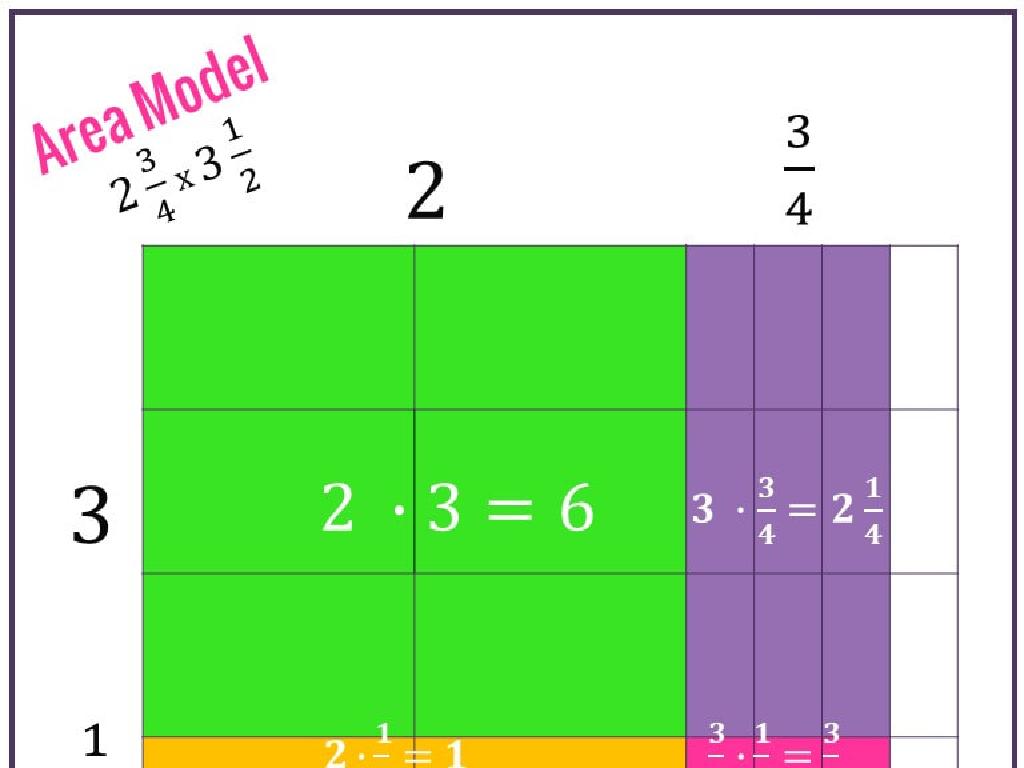Long-Run Consequences Of Stabilization Policies
Subject: Economics
Grade: High school
Topic: Macroeconomics
Please LOG IN to download the presentation. Access is available to registered users only.
View More Content
Long-Run Consequences of Stabilization Policies
– Macroeconomics: goals and overview
– Stabilization policies explained
– Policies aimed at reducing volatility in economy
– Long-Run vs. Short-Run impacts
– Long-Run: focuses on growth, inflation, and unemployment rates
– Analyzing long-run consequences
– Consider effects on national debt, productivity, and economic structure
|
This slide introduces the concept of stabilization policies within the framework of macroeconomics, aimed at high school students studying economics. Begin by discussing the goals of macroeconomics, such as achieving stable growth, low inflation, and low unemployment. Explain what stabilization policies are, including both fiscal and monetary policies designed to minimize economic fluctuations. Contrast the immediate effects seen in the short-run with the more profound implications in the long-run, such as changes in the national debt, productivity levels, and the overall economic structure. Encourage students to think critically about how these policies can shape the economic landscape over time.
Long-Run Effects of Stabilization Policies
– Fiscal Policy: Spending & Taxation
– Govt. adjusts expenses and taxes to manage economy
– Monetary Policy: Rates & Supply
– Central bank modifies interest rates and money supply
– Stabilizing the Economy
– Aim to reduce volatility and promote steady growth
– Long-Term Policy Impacts
|
This slide introduces students to the two main types of stabilization policies: fiscal and monetary. Fiscal policy involves government decisions on spending and taxation to influence the economy. For example, increasing spending or cutting taxes can stimulate economic growth during a downturn. Monetary policy, managed by the central bank, involves adjusting interest rates and controlling the money supply to maintain economic stability. Lowering interest rates can encourage borrowing and investment. These policies aim to minimize the business cycle’s peaks and troughs, promoting sustainable economic growth. Discuss the potential long-term effects, such as how excessive use of these policies might lead to inflation or government debt.
Short-Run Effects of Stabilization Policies
– Stimulate economic growth
– Policies like tax cuts can boost spending and production.
– Control inflation rates
– Central banks can adjust interest rates to manage inflation.
– Reduce unemployment levels
– Job creation strategies can lower unemployment figures.
– Balance short & long-term impacts
|
This slide aims to discuss the immediate impacts of stabilization policies on an economy. Stabilization policies are actions taken by the government or central bank to maintain economic stability. In the short run, these policies can stimulate economic growth by encouraging consumer spending and investment through measures like tax cuts or increased government spending. Controlling inflation is often achieved by adjusting interest rates, which can influence the cost of borrowing and spending. Reducing unemployment is targeted through job creation programs and supporting industries that can offer more jobs. It’s crucial to consider how these short-run effects play into the long-term health of the economy, as immediate benefits may lead to future challenges if not managed carefully. Encourage students to think critically about the trade-offs between short-term gains and long-term consequences.
Transition to Long-Run Consequences
– Understanding economic trade-offs
– Every economic decision has potential costs and benefits.
– Short-run success vs. long-run stability
– Immediate gains may conflict with sustained economic health.
– Foundations of long-run analysis
– Analyzing the enduring effects of policies beyond the immediate future.
– Balancing short-term and long-term goals
– Strategies to optimize outcomes over different time horizons.
|
This slide introduces students to the concept of economic trade-offs, emphasizing that every policy decision has potential costs and benefits that may affect the economy differently in the short run versus the long run. It’s crucial to understand that short-term success, such as a boost in employment from a stimulus, might not align with long-term stability, like controlling inflation. Setting the stage for long-run analysis involves looking at the enduring effects of policies and how they shape the economic landscape over time. Encourage students to think critically about how policymakers balance short-term and long-term goals, and the implications of these decisions on economic stability and growth.
Long-Run Consequences of Stabilization Policies
– Potential for increased public debt
– Government borrowing can escalate, burdening future generations.
– Risk of long-term inflation
– Persistent inflation may erode purchasing power over time.
– Structural unemployment issues
– Policies can lead to mismatched skills and job vacancies.
– Balancing short-term gains with long-term effects
|
This slide aims to discuss the potential negative outcomes of stabilization policies in the long run. Stabilization policies, such as fiscal and monetary interventions, are designed to smooth out economic cycles. However, they can lead to unintended consequences. Increased public debt may result from government spending to stimulate the economy, which can place a financial strain on future taxpayers. Long-term inflation can occur if the money supply grows faster than the economy, reducing the value of money. Structural unemployment may arise when industries change due to technological advances or shifts in demand, and the workforce’s skills do not match the new job requirements. It’s crucial to consider these factors when evaluating the effectiveness of stabilization policies. Encourage students to think critically about the trade-offs between short-term economic stability and potential long-term challenges.
Long-Run Consequences of Stabilization Policies
– Historical stabilization policies
– Review of policies like New Deal, post-war recovery plans
– Long-run outcomes analysis
– Assessing economic growth, inflation, unemployment rates over time
– Lessons from past policies
– Understanding policy effectiveness and unintended effects
– Modern policy implications
– How historical lessons inform current economic strategies
|
This slide aims to provide students with a comprehensive understanding of the long-term effects of economic stabilization policies through historical case studies. Begin with examples such as the New Deal or post-war recovery plans to illustrate how governments have historically attempted to stabilize their economies. Analyze the long-run outcomes of these policies by looking at key economic indicators such as growth, inflation, and unemployment rates. Discuss the lessons learned from these historical examples, including both the successes and the unintended consequences. Finally, connect these lessons to modern economic strategies, helping students to understand how past experiences shape current policy decisions. Encourage critical thinking by asking students to consider the trade-offs and long-term impacts of economic interventions.
Long-Run Consequences of Stabilization Policies
– Analyze policy effectiveness
– Assess policies’ success over time, using economic indicators like GDP, inflation, and unemployment rates.
– Consider alternative theories
– Explore Keynesian vs. Classical economics, and how each predicts different outcomes of the same policy.
– Debate on mitigating consequences
– Discuss if it’s possible to reduce negative long-term effects through careful planning and adjustment.
– Critical thinking in economics
|
This slide encourages students to engage in critical thinking about the long-term impacts of economic stabilization policies. They should analyze how effective these policies are by looking at historical data and economic indicators. Students should also consider different economic theories, such as Keynesian and Classical economics, which can offer contrasting views on the outcomes of stabilization policies. The debate section is designed to stimulate discussion on whether the potential negative long-term consequences of these policies can be mitigated through foresight and ongoing policy adjustment. Encourage students to use real-world examples and to think about the role of government in shaping economic outcomes.
Class Activity: Economic Policy Simulation
– Role-play as economic advisors
– Select a stabilization policy
– Forecast short-run & long-run effects
– Consider factors like inflation, employment, and GDP growth
– Present findings & reasoning
– Use economic theories to support your predictions
|
In this interactive class activity, students will be divided into groups and each group will act as a team of economic advisors. They will choose a stabilization policy such as fiscal stimulus or monetary tightening to implement. Students will then predict the potential short-run and long-run effects of their chosen policy on the economy, considering various macroeconomic indicators. Each group will prepare a presentation of their findings and the rationale behind their predictions, supported by economic theories and models. This activity will help students understand the complexity of economic policies and their impacts. Possible activities for different groups could include simulating the effects of tax cuts, government spending increases, interest rate changes, or implementing new regulations. The teacher should guide the students to think critically about the trade-offs and unintended consequences of economic policies.
Reflecting on Economic Stabilization Policies
– Recap: Stabilization Policies
– Review of policies aimed at reducing volatility in the economy
– Long-Run Consequences
– How these policies impact the economy over time
– Long-Term Effects in Planning
– Importance of foresight in economic decision-making
– Q&A and Final Thoughts
|
This slide aims to summarize the key points discussed in the presentation about stabilization policies and their long-run consequences. Begin with a brief recap of what stabilization policies are, including examples such as monetary and fiscal policy adjustments. Discuss the long-term impacts these policies can have on economic growth, inflation, and employment. Emphasize the significance of considering the long-term effects when formulating economic policies to avoid unintended negative outcomes. Finally, open the floor for any questions the students may have and encourage them to share their final thoughts on the topic, facilitating a deeper understanding and reflection on the material covered.






